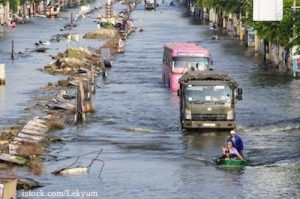The USDA has released a scientific assessment that states climate change is going to hinder progress on reducing undernourishment of people around the world in the next few decades. Climate change will also affect U.S. customers by changing the types of food imported from other parts of the world and their prices. As the climate changes, growing zones change and farmers are going to have to adapt.
 The report, stated “Climate Change, Global Food Security, and the U.S. Food System” was released to coincide with the climate change talks currently taking place in Paris. Food security is defined as having reliable access to a sufficient quantity of nutritious food that is affordable to the general population. The food must be available, accessible, stable, and the population must be able to utilize the food. The study is a consensus of contributors from 19 Federal, academia, nongovernmental, and intergovernmental organizations in four countries.
The report, stated “Climate Change, Global Food Security, and the U.S. Food System” was released to coincide with the climate change talks currently taking place in Paris. Food security is defined as having reliable access to a sufficient quantity of nutritious food that is affordable to the general population. The food must be available, accessible, stable, and the population must be able to utilize the food. The study is a consensus of contributors from 19 Federal, academia, nongovernmental, and intergovernmental organizations in four countries.
Even though first world nations are contributing much more to climate change through greenhouse emissions than poorer nations, the poor in tropical locations are at greatest risk for malnutrition and food insecurity, according to the study. USDA Secretary Tom Vilsack said in a statement, “The past six years have been a success story in terms of global food security. Two hundred million fewer people are food insecure today than they were six years ago. The challenge we now face is whether we can maintain and even accelerate this progress despite the threats from climate change.”
In the report, scientists say that adaptive practices and new technologies could help improve food security.The worst-case projections based on high greenhouse-gas concentrations and high population growth suggest that the number of people who will be undernourished could increase by as much as 175 million above today’s level by 2080. These conditions can lead to large scale migrations and conflicts as people search for food.
President Obama has pledged to reduce U.S. greenhouse gas emissions in the range of 26 to 28% before 2005 levels by 2025. The ten “building blocks” for “Climate Smart Agriculture and Forestry” are increasing carbon storage, generating clean renewable energy, improving soil health, and conserving sensitive lands, among others.




